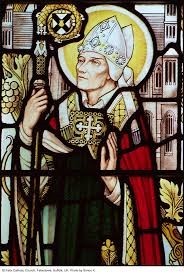SJF Feast Day: Who was St John Fisher?
John Fisher was born in Yorkshire, in 1469, the son of a simple but ambitious cloth dealer. John Fisher loved learning and when he was 14 years of age, he left home and started studying at Cambridge University. He worked hard and did well. Eventually he became a distinguished scholar.
When he was 22 (in 1491) he became a priest and carried on working at the university, rising through the ranks to become vice-chancellor, ten years later. John Fisher did so much to improve the university, and in 1504 he became its chancellor. He was also appointed as the new Catholic Bishop of Rochester in the same year.
Many really liked his ideas for improving education and were impressed by his passionate preaching. Bishop John Fisher loved reading and collected lots of books. In fact, it was said, by some at the time, that this humble son of a Yorkshire cloth dealer, had one of the finest private libraries in the whole of Europe!
Bishop Fisher was chaplain to Lady Margaret Beaufort, Henry VIII’s grandmother, and was probably, for a time, even one of Henry’s teachers when he was a boy.
King Henry VIII had once been an enthusiastic Catholic but a while after becoming King, he fell out with the Pope over his plans to divorce Queen Catherine, so that he could marry Anne Boleyn. The king therefore started to make plans to set up a Church of England, to exclude the Pope, and support his plans. This worried Bishop John Fisher who tried hard to change the king’s mind. Unfortunately, the king was very determined and so the two argued. Bishop John Fisher continued to defend traditional Catholic teachings, opposing Henry’s new ideas and his Protestant reformers in other English universities.
Bishop Fisher was so against the King's plans to divorce the Queen that he even became one of Catherine’s most trusted friends and advisors. The things he was saying were really starting to anger King Henry who could not forgive him. Bishop John Fisher even spoke out in the House of Lords against the king’s plans to divorce Catherine; to establish a Church of England; and attack the Catholic church, which also infuriated the King.
When Pope Clement VII refused to approve the King’s plans to end his marriage to Queen Catherine, Henry declared himself Head of the Church of England, and immediately ended the Pope’s authority in England. Now that he was in charge, the King declared his marriage to Queen Catherine to be over.
When Bishop Fisher refused to support King Henry’s changes or to make a special promise to accept him as the supreme head of the Church of England, he was arrested and sent to the Tower of London, where he remained for more than a year. The conditions were terrible, and John Fisher suffered much during his imprisonment there.
While he was in prison the new Pope in Rome decided to promote Bishop Fisher and made him a Cardinal. He hoped that King Henry would treat him better then. Unfortunately, it had the opposite effect and made King Henry even angrier. Cardinal Fisher was put on trial for treason and found guilty. He was condemned to death and was beheaded on June 22, 1535. Cardinal Fisher met death with a calm dignified courage which profoundly impressed all those who saw it.
The painting of John Fisher dressed as a Cardinal is interesting. In reality he never wore such clothes because he was in prison when he was made in to a Cardinal. He was later canonised and became a saint in 1935.



